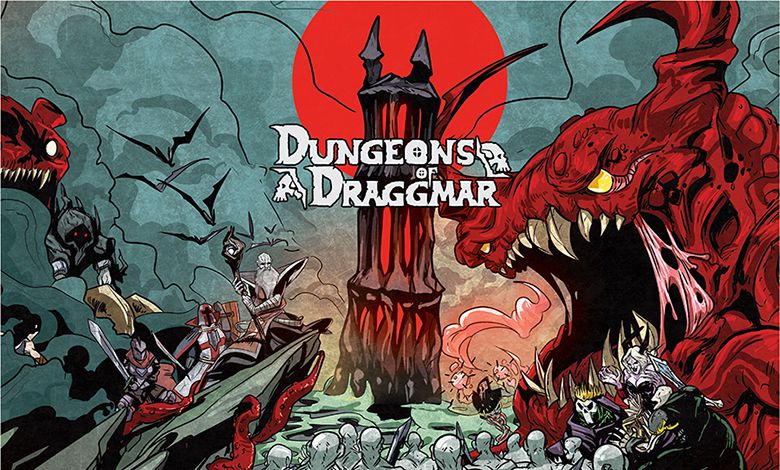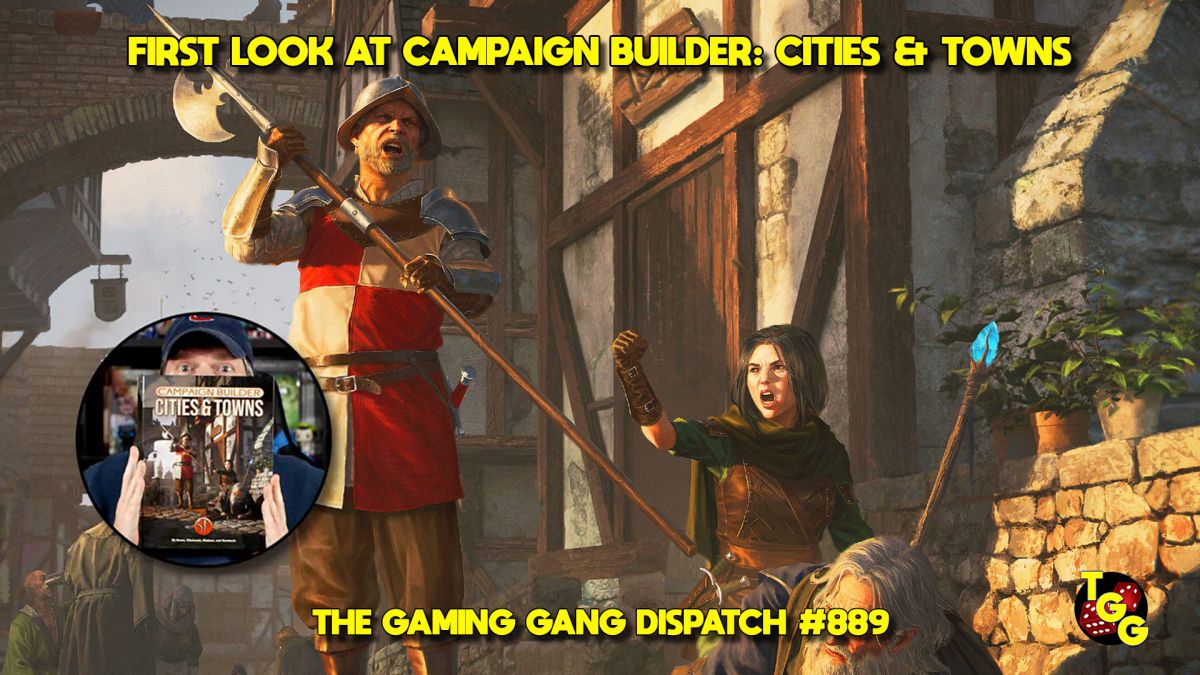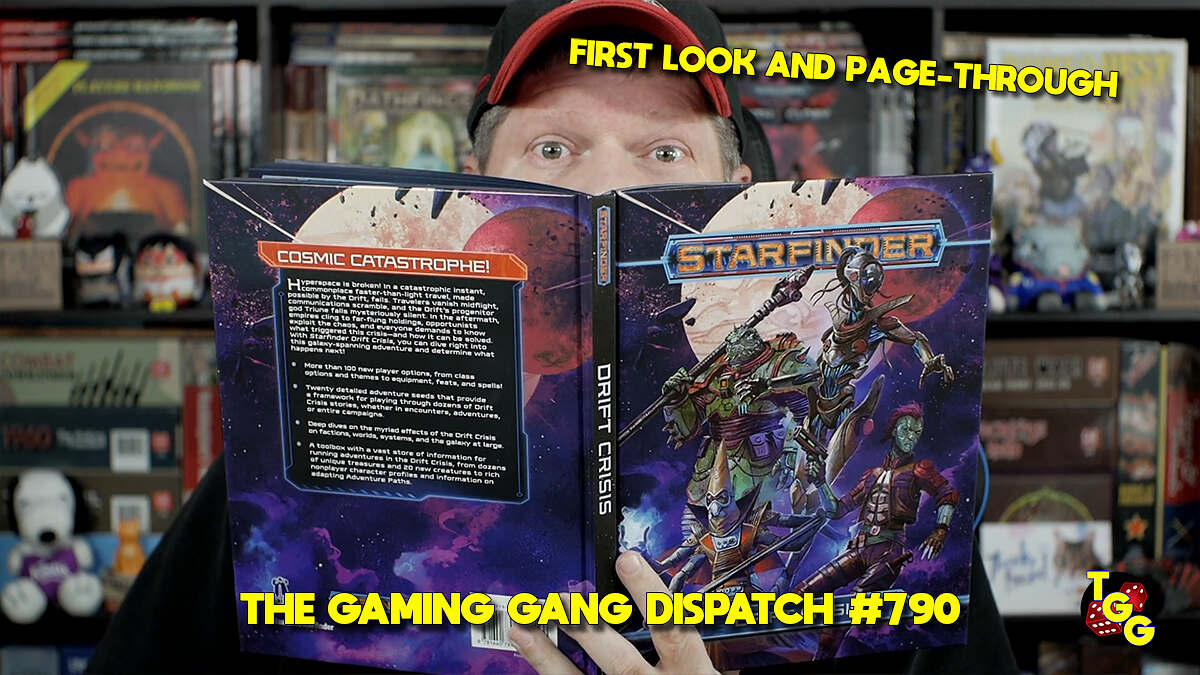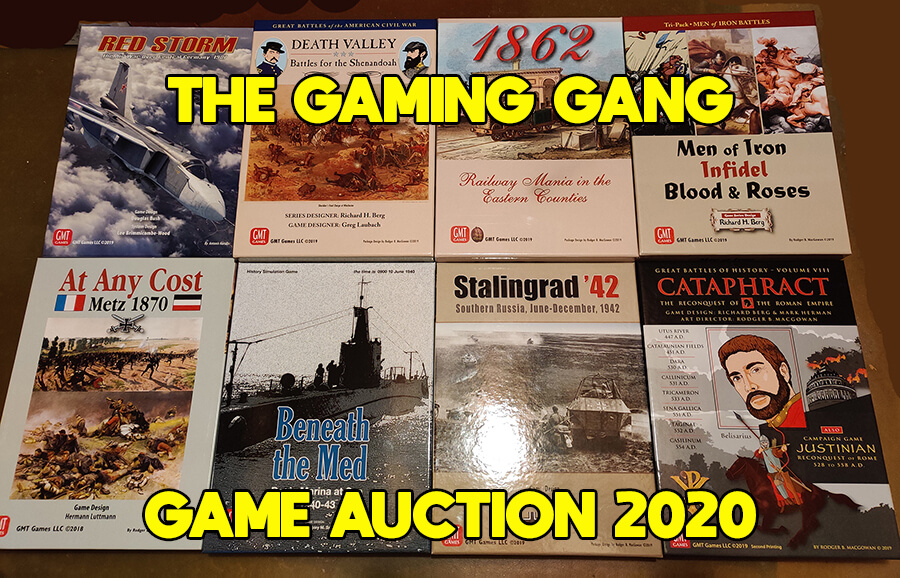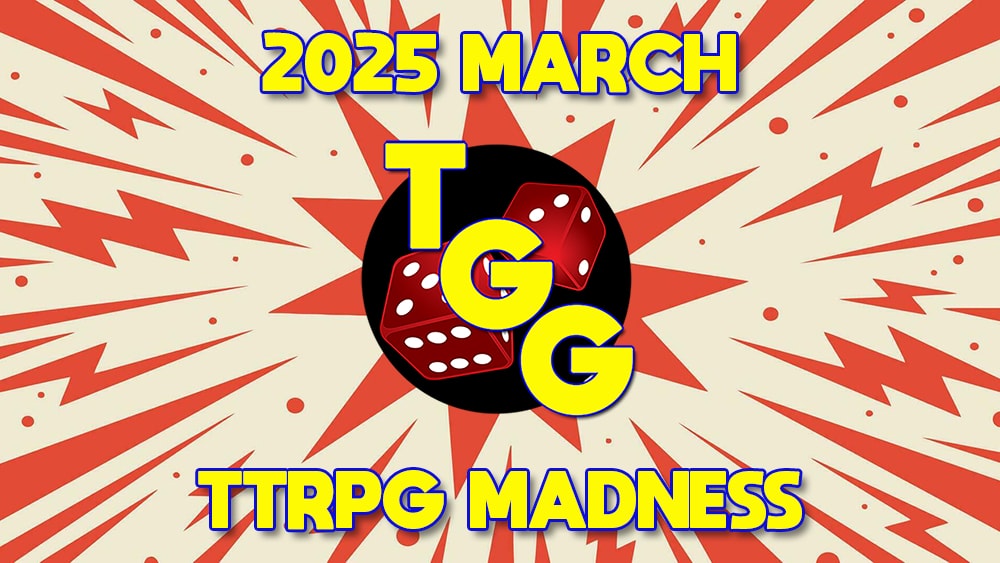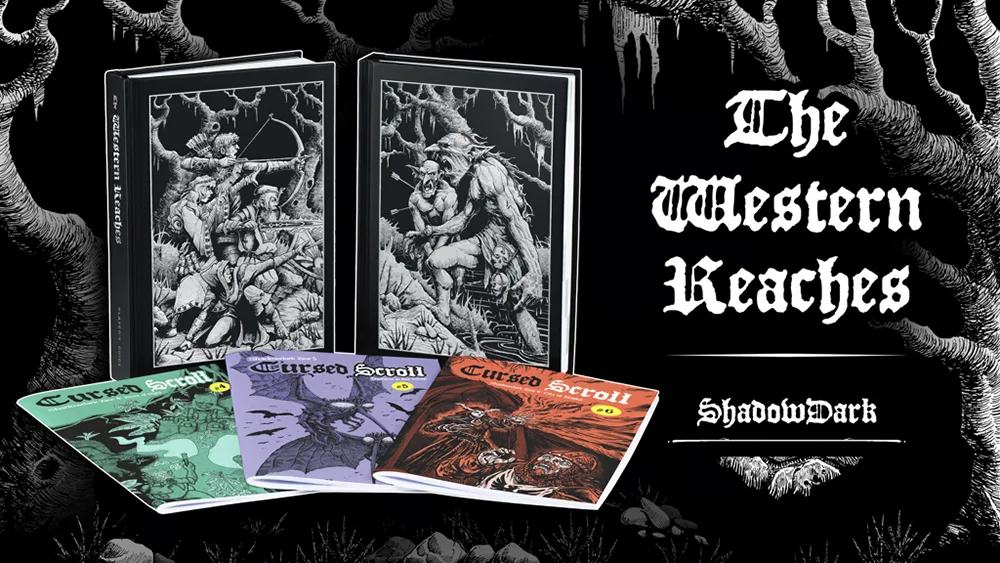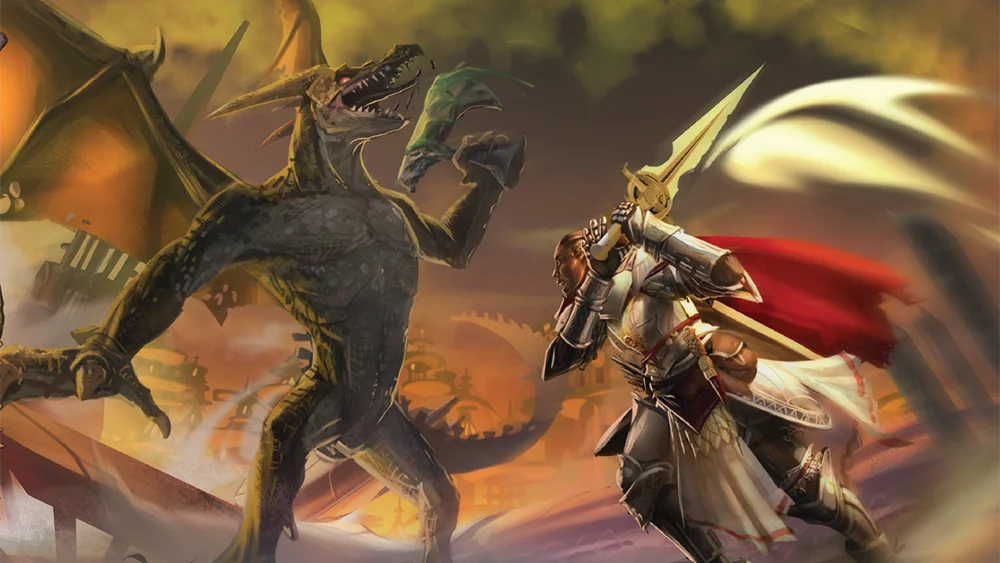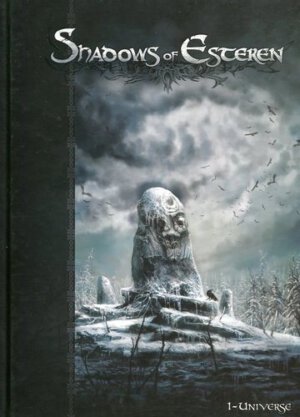
Publisher: Agate Editions – Available in English from Studio 2 Publishing
Designers: Joëlle Deschamp, Dragon-Étoile, Laurent Duquesne, Frédéric Hubleur, and others
Year: French Edition (Les Ombres d’Esteren) 2010; English Edition 2012
Players: Two or more
Ages: 13+
Playing Time: As long as you wish
Pages: 290
Retail Price: $49.99 Hardcover; $24.99 PDF
Category: Gothic Low Fantasy RPG
Our first exposure to Agate Editions’ Shadows of Esteren was at this year’s Gen Con. Elliott and I had the opportunity to chat with Valentin Rebondy and Clovis Fremont about the roleplaying game and, if you listen to our extras you probably have a bit of an idea about the game world. If you missed that show you can click on the link above otherwise here’s a quick synopsis of what Shadows of Esteren is all about.
Shadows takes place in the world of Tri-Kazel – translated from the old tongue meaning Three Kingdoms – and the setting is that of low fantasy. This means magic and monsters exist just not to the extent where you encounter great feats of sorcery or hideous creepy crawlies at every turn. Granted it seems as if everyone populating the setting knows about evil creatures (collectively referred to as Feondas – the enemy) yet they may not encounter one in their lifetime. The game has been touted as a Call of Cthulhu meets Ravenloft type of game by some but in my opinion the title is nothing like either of those. Truth be told what really sticks in my mind as being of a similar style is the classic Microprose PC game Darklands. That game took place in an easily identifiable world – grounded heavily in the reality of 15th century Europe – with added elements of magic and monsters. Shadows has that same sort of feel to me. I can’t say it’s like CofC because that title involves a lot of investigation and a successful adventure or campaign revolves around more of a slow burn leading up to an unsettling climax. Add to this the characters in CofC are nearly always in situations where they’ve brought a knife to a gun fight whereas in Shadows of Esteren the players may not be overpowering but normally find themselves on even footing. Plus, I believe it’s safe to say you can’t have a horror setting when everyone in existence knows about the unknown horrors…
At this point you might be thinking I don’t like Shadows of Esteren and I certainly don’t want you to think that; I just want to make people aware the game isn’t anything like the comparison Studio 2 has previously made to both CofC and Ravenloft. Or at least it’s not an accurate comparison in my book.
The first thing which will catch your eye when you open the book (or load up the PDF) is the artwork. No other word can best describe what you’ll see other than stunning. It really is top notch and I’d even guess folks who like gothic fantasy art, but don’t game, would even get a kick out of paging through. Luckily at nearly 300 pages there’s plenty of eye candy but there’s still loads of what you’re plunking down hard earned ducats for – game material.
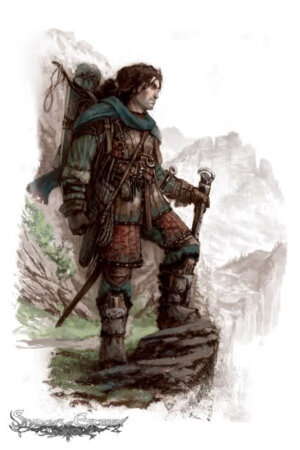
I say this is a story telling game because the focus of the system is just that. There aren’t hundreds of charts related to all manner of things – grappling anyone? – as rules take a back seat to crafting a tale which will entertain the players and Leader (i.e. GM/DM/Keeper) alike. The book even points out you shouldn’t be using dice at all except when absolutely necessary, such as when a player is attempting something out of character or when the players and Leader can’t be sure how a particular situation should be resolved. This aspect of the game will appeal to some gamers while turning off those who require more of a structured system in their RPG.
When dice do need to be rolled the process is simple and quick with a single d10 utilized and then modified by bonuses or penalties. The result is compared to a difficulty number in order to determine success or failure.
Very simple stuff folks.
The character creation in Shadows of Esteren is something that, while maybe not revolutionary, certainly is worth noting as its one of the strongest elements of the system. Rather than a bunch of the traditional attributes like STR, CON, DEX characters possess five Ways. These are:
Combativeness: Not how well you fight but more of your tenacity and zest for life than anything else.
Creativity: Your resourcefulness, imagination, and ingenuity
Empathy: How in tune to the environment you are, perceptive of others, and emotional
Reason: The level of rationalization or reflectiveness a character possesses.
Conviction: How firmly you hold to a set of morals or beliefs.
These stats are scored one through five and having a low number in any of these isn’t necessarily a bad thing. If you possess a high Combativeness your character will have a difficult time staying their hand when maybe a cooler head is needed. Just as a low Reason doesn’t mean your character is stupid but simply the fact they are more apt to run with a hunch rather than sit and ponder endlessly over something. This aspect of creating characters reminded me a bit of the Pendragon system as you’re tuning the personality of your alter ego as opposed to determining how much encumbrance they can endure or how many feet they may move in a ten second span. There are pros and cons of scoring high or low and this introduces a lot of thought into realizing who the character is instead of what they are.
Characters have professions and eighteen are included as examples with plenty of room to create your own. You say you want to be a barber? Knock yourself out! Of course I mean a barber in the Dark Ages not the guy with that spinning striped pole down the street… You profession determines your primary and secondary skill and if you have enough points devoted to a skill you’ll also receive the opportunity to select an offshoot specialty of that skill. The initial skill is called a Domain while the offshoots are Disciplines. Disciplines normally provide an additional bonus. Each Domain is also tied into a Way so an example break down would be Reason leading to Relation leading to Diplomacy.

Also included in the character’s stat package are Strength, Armor, and Defense – which are calculated by combining different Ways; Advantages and Disadvantages; Sanity; and Health. Because the focus here is on a grittier and more realistic game world characters won’t become walking Angels of Death or mega-damage absorbing tanks so regardless of experience your alter ego is just as vulnerable to cashing it in due to a well-placed axe blow as the shepherd tending his flock down the road.
Overall I like the focus on fleshing out the characters and investing into crafting a personality and a purpose as opposed to the sometimes overly simplistic “I’m gonna be a Paladin” approach for a majority of games out there.
Combat is resolved just as any other task in the game with various combat stances to be used by the character. Just a few dice rolls will normally complete the action and you can expect fights to be much more lethal than a standard fantasy game. Players approaching combat with a hell bent D&D/Pathfinder mentality will find themselves rolling up new characters at an alarming rate as yet another hero’s remains are carted off to the boneyard.
I’d say the weakest part of the system (or at least this first book in the series translated to English) is the game world. We get what’s mainly a pretty generic setting all in all and while there is a sprinkling of interesting ideas, much of what’s presented has been seen before. Included in the character mix are magic users, clerics, thieves, and steampunk scientists. Sure the magic involved is more the low fantasy variety – you won’t be watching fireballs flying all over the place incinerating anything that moves – but simply tacking on a new name to a well-worn gaming trope (magic users are called Demorthen) doesn’t make it anything other than what it is; a cleric is a cleric regardless if you call them a healer, a priest, a shaman, or what have you. Also to note, and yes I know steampunk is kind of the rage these days, I think the Magientist characters are a bit of an unbalancing act for the system. I won’t say they feel tacked on but that aspect of the game world doesn’t gel as well as it should. This is possibly addressed in one of the other books but at this point I think having that level of technology skews the game to some extent.
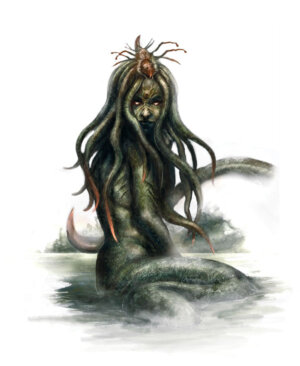
Plenty of page space is devoted to the game world as you’ll find over half of the book delves into Tri-Kazel long before you even get a whiff of the game rules. The entirety of the sections devoted to the world is presented as the writings of various citizens of the kingdoms. This might not be everyone’s cup of tea – especially for those used to having everything laid out in front of them as descriptions and stats – but as I’ve seen presented in other RPGs, much of the writing can be said to come from what we would call the unreliable narrator so there’s no telling if these are facts, opinions, outright lies, or what. There’s loads of detail but what’s fact and what’s fake is left to the Leader to decide. This makes for an interesting read but newer initiates to RPGs may be a little frustrated by this approach.
Speaking of stats, you won’t find any sort of monster compendium giving you a breakdown of the creatures you’ll encounter. The Feondas are dealt with in broad terms, and mainly in overview, so Leaders are forced to develop whatever hard details, stats and abilities the creatures may possess. This give a lot of creative freedom to the Leader but it’s also something new gamers will most likely take issue with. This isn’t to say these monster stats aren’t dealt with in one of the books still to be translated or are to be tackled in the future but to this point they don’t exist in this book.
Once again folks are reading a review where they’re probably coming to the conclusion I don’t like the game. With Shadows of Esteren, that’s surely not the case as I happen to like the release quite a lot and it’s no doubt one of the better RPG releases of 2012. A system doesn’t have to mechanically reinvent the wheel or provide a never before seen setting in order to be good. Shadows is certainly not the sort of RPG I’d recommend picking up for those who’ve never role played before simply because there’s too much left to the discretion of the person tasked with running the game and I believe that would overwhelm most. It’s also not for an audience of hack and slash players either because the focus here is strongly on the side of tone, mood, and story. Yet for players looking for a more realistic, low fantasy setting filled with a lot potentially interesting ideas Shadows of Esteren is surely worthy of a purchase and I highly recommend this book.
- Pre-order the Warhammer 40,000 Roleplay: Imperium Maledictum – Macharian Requisition Guide - Mar 14, 2025
- Gary Gygax’s Castle Zagyg Volumes #1-3 is Up for Crowdfunding for Troll Lord Games - Mar 14, 2025
- Blacklight Modern Horror Shadowdark Fueled RPG Passes 300% Funding on Kickstarter - Mar 14, 2025



